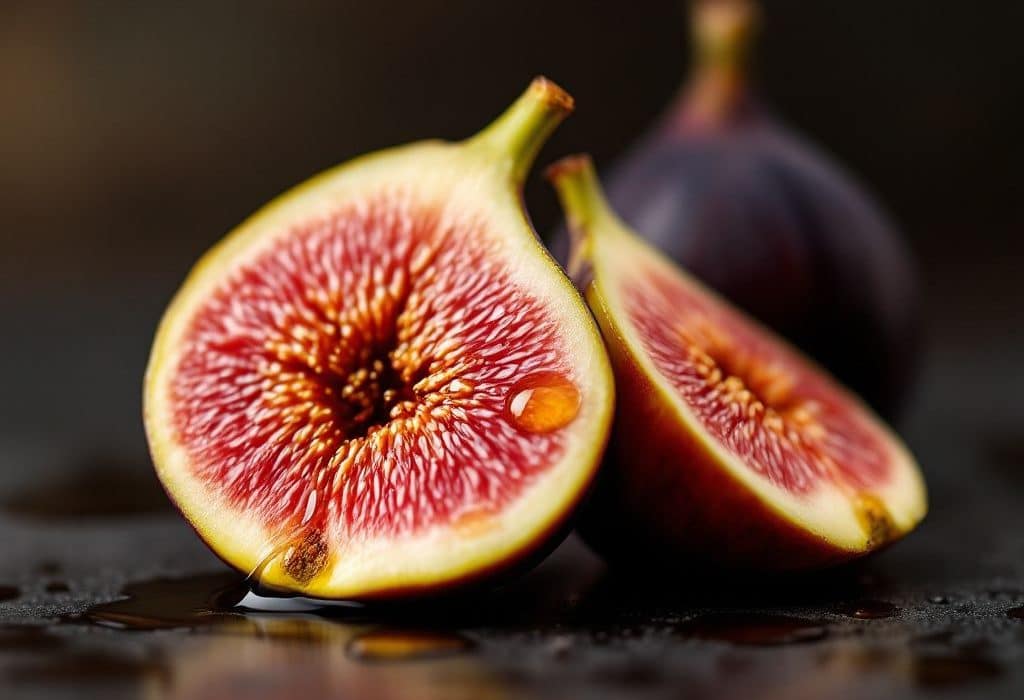Alright, picture this: there you are, scrolling through yet another batch of skincare products, each promising to transform your life—or at least your skin. Suddenly, you stumble upon something old, yet new: fig seed oil. It’s intriguing, with its ties to that legendary sacred fruit: the Fig. This ancient beauty secret could actually be the answer to a more natural skincare routine. But what’s the real deal with fig seed oil, and how can it fit into your daily life? Let’s dive right in.
Unearthing the Ancient Fig
Let’s rewind a bit. Figs have been hanging around since antiquity, revered in many ancient cultures. Imagine Cleopatra lounging in Egypt with figs in hand, appreciating not only their taste but possibly their skin-enhancing properties. The fig has always symbolized prosperity and wellness, even making appearances in biblical texts. Today, this ancient allure finds a modern ally in fig seed oil—a fantastic elixir quietly bursting onto the natural skincare scene.
The real magic lies in those tiny seeds, packed within the fig’s sweet flesh. Who would’ve thought that such minuscule components could have a major skincare kick?
What Makes Fig Seed Oil So Special?
You might ask, “Why should I switch to fig seed oil?” Well, let’s break it down. This oil is a powerhouse full of essential fatty acids—think omega-3, omega-6, and omega-9—that immerse your skin in moisture. It’s like a big, hydrating gulp for your thirsty skin. These fatty acids plump and hydrate, making fig seed oil an extraordinary moisturizer for your face and body.
But there’s more. Fig seed oil is packed with vitamins like A, E, and C. Vitamin E acts as an antioxidant hero, fighting off those pesky free radicals that age your skin prematurely. Meanwhile, vitamin A helps repair and renew, promoting that refreshed appearance we all crave.
And how could we forget about Vitamin C? It’s like the brightening buddy your skincare routine has been missing, helping even out skin tone and tossing in a bit of glow, like confetti for your face.
Blending Into Your Skin Detox Routine
Integrating fig seed oil into your routine is simpler than you might think. Here’s a little roadmap:

1. Cleanse, Cleanse, Cleanse!
Always start with a clean slate. Use your regular face wash—one that aligns with your skin type—to remove dirt and makeup.
2. Apply Fig Seed Oil
After cleansing—it’s your moment. Take a couple of drops of fig seed oil into your palms. Warm it up and massage it gently into your face and neck. Trust me, those circular motions are key to getting the goodness deep into your skin.
3. Layer It Up
Still got your moisturizer, toner, and serums? No problem. Fig seed oil is non-comedogenic, meaning it won’t clog your pores, so feel free to layer it under or over your favorite products.
4. Regular Love
Those consistent drops not only keep your skin nourished but can also reduce fine lines over time thanks to its potent mix of nourishing ingredients.
The Fig Fruit Skin Revival
Let’s pivot a tad to its more general benefits. Beyond just fig seed oil, incorporating figs and fig-derived products into your natural skincare routine can contribute to your journey to better skin health. You can explore masks, scrubs, and more. A DIY fig puree mask can offer instant hydration, leaving your fig skin plump and happy.
Here’s a simple fig mask you might want to give a whirl:
**Ingredients:**

- figs
- tablespoon of honey
- A few drops of fig seed oil
Mash everything in a bowl until smooth. Spread it across your face, relax for 15 minutes, and then rinse with lukewarm water. The results? Radiant, smooth skin that feels as luxurious as it looks.
Balancing and Revitalizing with Fig Seed Oil
Another cool thing about fig seed oil is its balancing act. Have combination skin? It can help regulate your skin’s sebum production, making you less likely to experience mid-afternoon shine attacks or cobbling together matte powders. Unlike heavier oils that may make your skin scream “Oil overload!”, fig seed oil absorbs quickly leaving none of that greasy residue behind.
Fig Seed Fun Facts and Trivia
Let me veer off the path for a sec to share some fun facts—these might win you a trivia challenge some day!
- Fruity Origins: Figs were one of the first plants ever cultivated by humans. Imagine a time 11,400 years ago—whoa!
- Ancient Prestige: Romans celebrated the fig as a gift from Bacchus, the god of intoxication and revelry. Maybe revel in your figgy skincare journey with a little dive into history?
- Universal Healer: While we’ve been chatting about skincare, fig extracts have been used in traditional medicine for centuries for various ailments.
Fig Seed Oil vs. Other Oils: A Quick Comparison
You might still be wondering how fig seed oil stacks up against your trusty favorites, like argan or jojoba oils. Let’s simplify it:

| **Oil Type** | **Main Benefit** | **Texture** | **Best For** |
|---|---|---|---|
| Fig Seed Oil | Moisturizing and nourishing | Light to Medium | Balanced and glowing skin |
| Argan Oil | Intensive hydration | Medium | Very dry or mature skin |
| Jojoba Oil | Balancing and similar to skin’s sebum | Light | Oily and acne-prone skin |
| Rosehip Oil | High in vitamin A for rejuvenation | Medium | Aging and sun-damaged skin |
| Coconut Oil | Deep hydration with an antibacterial kick | Heavy | Dry skin, or as a rinse-off mask |
Consider this your natural skincare cheat sheet when deciding which oil might be the right fit for you.
Action Steps to Embrace the Fig
Alright, you’ve heard the stories and sifted through the facts. Now it’s all about action. Here’s how you can bring fig seed oil into your life seamlessly:
- Start Small: Begin with a patch test to ensure your skin loves fig seed oil as much as your research-loving heart does.
- Different Contexts: Use fig seed oil solo as a serum, or mix it with other oils and butters for a personalized blend.
- Observe Changes: Monitor your skin’s response; sometimes these changes come in subtle ways. Regular check-ins help bridge your goals with processes.
- Combine with Lifestyle: Remember, consistency in any natural skincare routine is key. Combine this oil with other healthy habits like hydration from within and a balanced diet.
- 5. **Enjoy the Results: Let enjoying the process guide your experimentation. Because skincare isn’t just a routine, it’s a ritual.
Wrapping Up Our Fig Seed Journey
There’s a certain charm to the ancient wonders of fig seed oil, linking back millennia yet meeting our modern needs with open arms. Whether you’re a natural skincare newbie or a seasoned pro on the lookout for new tips, fig seed oil holds so much promise and potential. Step back from those crowded, chemical-heavy products and embrace a routine that’s a bit more natural, perhaps a bit more kind. After all, simplicity and efficacy often go hand in hand.
Give fig seed oil a whirl. Trust me on this—it just might be the game-changer you didn’t know you were seeking. Here’s to naturally radiant skin and a fun, ongoing skincare journey!
Frequently Asked Questions
What are the benefits of using natural skincare products?
Natural skincare products offer several benefits, including being gentler on the skin, reducing the risk of irritation and dryness, and providing nourishment through nutrient-rich and antioxidant-rich ingredients. They are also free from harsh chemicals, artificial colors, and fragrances, making them suitable for sensitive skin. Additionally, natural skincare products can help prevent premature aging and are more environmentally friendly[1][3][5>.
How do natural skincare products differ from conventional skincare products?
Natural skincare products are primarily composed of ingredients derived from plants, animals, or minerals, with minimal or no chemical or synthetic substances. In contrast, conventional skincare products often contain harsh chemicals, preservatives, and synthetic ingredients that can strip the skin of its natural oils and cause irritation. Natural products adhere to stricter standards, such as the absence of pesticides and fertilizers, and are more aligned with the body’s natural mechanisms[1][3][5>.
What natural ingredients are commonly used in natural skincare products?
.
Are natural skincare products suitable for all skin types?
Natural skincare products are generally suitable for all skin types, including sensitive skin. They are formulated to work in harmony with the body’s natural mechanisms and are less likely to cause irritation or dryness. Whether you have dry, oily, or sensitive skin, there are natural products available that can address specific skin concerns and provide a balanced and healthy skincare routine[1][3][5>.
References

